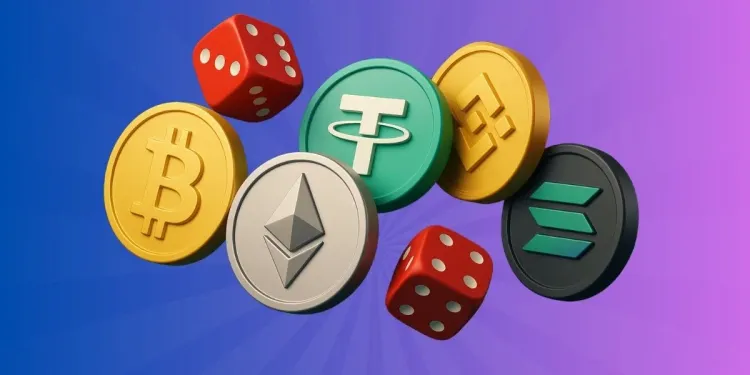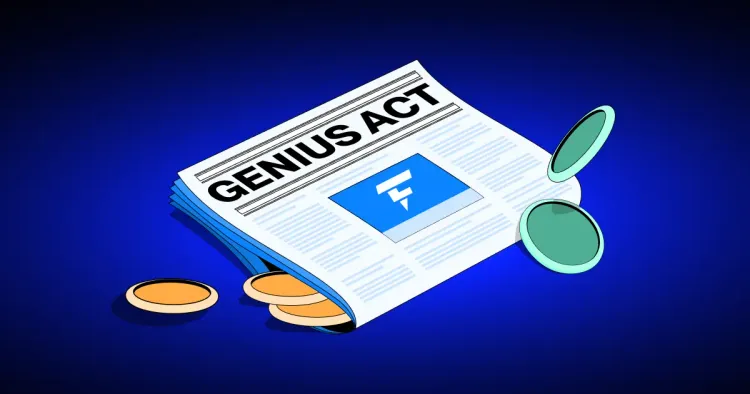Crypto Guide: What is a Stablecoin?

Coins.ph is the latest company to propose a stablecoin. Last week, the company received approval from the Bangko Sentral ng Pilipinas (BSP) to pilot a PHPC stablecoin backed by the Philippine peso. In August 2023, PayPal also announced the launch of its PayPal USD (PYUSD), a stablecoin for payments. But what is a stablecoin, how does it function, and what makes it different from Bitcoin and other popular altcoins?
On May 9th, Coins.ph posted an announcement sharing the approval from the Bangko Sentral ng Pilipinas to pilot PHPC, a Philippine Peso-backed stablecoin. The initiative is part of BSP's Regulatory Sandbox Framework, designed to enable the development and testing of emerging or new technologies to deliver products and services in a controlled environment. If the project pushes through, it will be the first stablecoin developed by a Philippine-based crypto company.
But it's certainly not the first in the industry since stablecoins have existed for some time. The latest stablecoin to be issued is PayPal's PayPal USD (PYUSD), a USD-denominated stablecoin designed for payments. PayPal's PYUSD is backed by US dollar deposits, short-term US Treasuries, other cash equivalents, and redeemable 1:1 for the US dollar. Then, the most popular stablecoin, Tether (USDT), is also pegged to the USD. Tether is issued by iFinex, a Hong Kong-registered company that operates BitFinex, a crypto exchange.
Stablecoins- A crypto that's pegged to another asset
Stablecoins are cryptos whose values are pegged to other asset classes, like a fiat currency (USD) or gold, to stabilize their price. These coins are offered as an alternative to popular cryptocurrencies, particularly Bitcoin, defined by high volatility, making them less suitable for most transactions.
Traditionally, stablecoins attempt to 'peg' their market values to an external reference, often the US dollar. Since this arrangement is less volatile, stablecoins are often useful for completing common online transactions. Stablecoins also maintain reserve assets as collateral, or through algorithmic formula to manage supply.
In a way, stablecoins offer regular traders and the average individuals a sense of security when looking at their assets. Bitcoin and other altcoins are known for their volatility, which can be highly convenient for some who are always tracking their investments' worth a week or month from now for their security and livelihood. Crypto's unpredictability contrasts the generally stable prices of fiat money like the US dollar or other assets like gold. Yes, the values of fiat currencies also change over time, but the day-to-day changes aren't as drastci compared to cryptos.
The result is a currency that combines crypto technology and the stability of price action of fiat currencies or gold. As mentioned, a stablecoin is pegged on an underlying asset, and a reserve is set up that stores the assets or assets backing the stablecoin. For example, its developers may hold $10 million in a bank to back up 10 million units of the stablecoins. The money or asset in the reserve acts as the collateral for the stablecoin, so every time a holder wishes to cash out their tokens, an equal amount is taken out from the reserve.
Dai and algorithmic stablecoins-Offering a different way to back up the coins
But other stablecoins work differently, backed by cryptocurrencies other than fiat money, yet they're still designed to track a mainstream asset like the USD. A good example of this type is MakerDAO, which offers a stablecoin through a service called 'Vault' or Collaterized Debt Position. Under this arrangement, the user's cryptocurrency is locked up, and once the smart contract knows that the collateral is secured, it can be used to borrow Dai, its stablecoin.
Another variety of stablecoin is the algorithmic stablecoin, which isn't collateralized. Instead, developers burn or create coins to keep their value aligned with the target price. For example, if the stablecoin's target price of $1 falls to $0.75, its algorithm automatically burns a tranche of coins to introduce scarcity, thus pushing the value back to the same level. This stablecoin protocol is complicated to implement, and many developers tried yet failed to adopt the technology.
Popular stablecoin collateral

Stablecoins' main appeal lies in their use of collateral to back up its value. Here's a look at the different types of stablecoins used for backing crypto assets:
- Fiat: Fiat currency, like the US dollar, is the most common collateral for stablecoins. Other currencies have recently been used, like the Turkish Lira for the bilira and the planned PHPC, which is pegged on the Philippine Peso.
- Precious metals. Some stablecoins are tied to the value of precious metals like silver or gold.
- Cryptos. Developers may also use other cryptocurrencies to back up their stablecoin projects. Most stablecoin projects that use this mechanism use Ether, Ethereum's native token, as collateral.
- Other investment. Tether's USDT uses various collateral to back up the stablecoin. In a breakdown provided by the company in 2021, half of the company's reserves are in commercial paper, a form of short-term corporate debt rated A-2 or higher. Circle's USDC also lists a variety of approved investments as collateral.
What are the possible drawbacks of stablecoins?
Stablecoins are a more secure investment option for traders and individuals. Stablecoins' proponents also say that they are better alternatives for payments. However, there are a few drawbacks to keep in mind. Some potential issues come from how these cryptos are set up.
Let's discuss stablecoins' primary selling point: collateral. Traders and observers often ask the question: Does the company really have the collateral to back its stablecoins? For Tether's USDT, the debate centers on its claim of a 1:1 backing. Also, storing the reserves in a bank or another third-party location brings up another vulnerability.
The worst thing for stablecoin traders and investors is that the promised reserves backing the stablecoins are insufficient to redeem each unit. If this scenario happens, it affects investor confidence and may spell the fall of the stablecoin project.
Then, there's also the growing concern for regulation. Like Bitcoin and altcoins, stablecoins are increasingly subjected to inquiry and potential regulation. For example, the Biden administration announced in 2022 that it plans to regulate stablecoin issuers like banks. If this happens, issuers must insure their stablecoin reserves, creating a crypto version of the FDIC insurance. This proposed insurance protects traders from price fluctuations, theft, and the issuer's bankruptcy.
Also, issuers are subjected to federal oversight and auditing. And like other financial companies, issuers must comply with other rules, including promoting interoperability among stablecoins. Finally, there's still a growing debate about considering stablecoins as commodities or securities.
Stablecoins may have a few drawbacks, but there's no denying its potential to change the payments and financial landscape. It's the only form of digital cash that's widely available, offering stability in value through the backing of reserve assets. Stablecoins are slowly gaining wide acceptance, too, with many companies within the technology and financial sectors integrating stablecoins into their products. There are may be regulatory challenges ahead, but stablecoins will likely play a crucial role in shaping the future of digital money and the online financial landscape.




